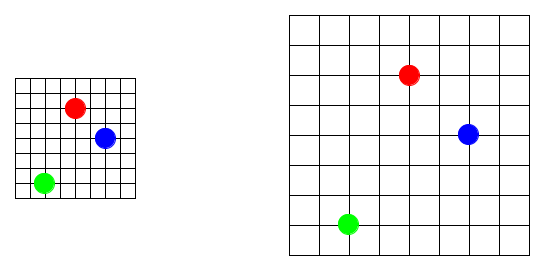Cosmology and Cosmogony
Some Definitions
Let's make sure we know what we are talking about.
- Cosmology is the study of the universe at its largest scales, including theories of its origins, its dynamics and evolution, and its future.
- Cosmogony is the (scientific) study of the origin of the cosmos (or of reality itself).
- Cosmography deals with mapping the universe.
- Cosmetology is the art or profession that deals with beauty product application and hair styling.
- Astronomy deals with celestial objects (rather than the universe as a whole).
Cosmology
Types of Cosmology
There are:

- Physical cosmology (Wikipedia), incorporating physics, astrophysics, and astronomy;
- Religious cosmology (Wikipedia), involving origin stories and mythologies from religious traditions;
- Metaphysical cosmology, dealing with questions "beyond science," such as the cause of the origin of the universe, whether its existence is necessary, whether it has a purpose, its ultimate composition, and even the nature of consciousness, without requiring a religious tradition; and
- Esoteric cosmology (Wikipedia), which deals, with, well, start with the Wikipedia article....
(Physical) cosmology is sometimes considered to have arrived as an experimental science during the 20th century.
The SEP has an article on the relationship between physcial and religious cosmology.
The Big Bang Cosmology
The Big Bang Theory (BBT) is today's most accepted cosmology. It accounts for how the universe is thought to have developed after something triggered an expansion from some massively hot and dense gravitational singularity, whose size was smaller than an atom.
What it is not
The BBT does not say:
- where the supposed singularity came from
- what caused the initial expansion, or how or why it occurred
- that something actually exploded
- anything about the origin of life (though origins of matter, energy, and structure are considered)
- that an external creator is required (though this is embraced by many theists)
- that an external creator is ruled out
The History of Universe according to the BBT
First, a little of the evidence for the theory. I'm not sure who the author of this video is, but it is a nice introduction....
If you'd like to start with external sources...
- History of the Universe slideshow at pbs.org
- Another slideshow at space.com
- WMAP's Universe by NASA DO NOT MISS
- Evidence for the Big Bang by Björn Feuerbacher and Ryan Scranton (very interesting, but not exactly peer-reviewed)
The following timeline is summarized from Neil deGrasse Tyson's article The Greatest Story Ever Told:
Understanding the Expansion of Space
Why do most of the galaxies appear to be moving away from us? Are we at the center? Actually no—every point in the universe sees the same thing: galaxies flying away from itself; there's no center. How can this be? It's because space is expanding. Huh?
Imagine raisins in bread as it expands while baking. Or people sitting on a huge rubber sheet being expanded. In the following diagram:

| From the point of view of | At time t1 | At time t2 |
|---|---|---|
| Red | Green is 5.385 units away Blue is 2.828 units away | Green is 10.77 units away Blue is 5.657 units away |
| Green | Red is 5.385 units away Blue is 5 units away | Red is 10.77 units away Blue is 10 units away |
| Blue | Red is 2.828 units away Green is 5 units away | Red is 5.657 units away Green is 10 units away |
Note how the farther away something is to begin with, the farther away it flies in a fixed time period!
Play with the following interactive. Here the green galaxies represent the universe at time t1, and the red galaxies at some time t2 later than t1. Move the reds so that they overlay any green galaxy you choose, to see how the expanding universe looks like from its point of view.
Alternatives to the Big Bang Cosmology
You can find "alternatives" to the BBT, some serious, some bordering on or squarely in the realm of, really bad science, here and here.
Religious Cosmology
Wikipedia is a good place to start:
- Religious Comsology
- Buddhist Comsology
- Hindu Comsology
- Islamic Comsology
- Sufi Comsology
- Jain Comsology
- Biblical Comsology
Social scientists and historians often study these cosmologies and relate them to the historical and social context in which they were written. For example, consider the two origin stories in the Tanakh. They each describe an order of creation events:
| Genesis 1-2:4a | Genesis 2:4b-24 |
|---|---|
| Heaven and a formless Earth (but with water) | Heaven and earth |
| Light | Water, flowing out of the ground |
| Firmament (sky dome) | A man (Adam), made from the soil |
| Dry land, vegetation | A garden (Eden), vegetation, lots of trees, one special "knowledge" tree, and four rivers |
| Sun, moon, stars | |
| Fish, sea-monsters, birds | Land animals, birds |
| Land animals (cattle, creeping things, and wild animals), humans | A woman (Eve) |
How might we explain the structure and content of these stories? Here are two explanations:
- Story 1 was written by farmers and city dwellers, living in river basins worried about
floods (hence the fish); the story talks of humans being created in the image
of God, taking "dominion over the earth" and shaping it to their needs, celebrating
civilization and progress.
Story 2 was written by sheperds and camel drivers, living in semi-arid areas (hence NO fish); the story tells of humans who are servants of the garden and cast out because they tried to be godlike, and of the virtues of the simple pastoral life. - The two stories complement each other by talking about two sides of human nature: our power over nature but the need to, perhaps, not get carried away.
More on Cosmology
Here are some excellent sources for more information:
- Wikipeda: Universe
- Wikipeda: Observable Universe
- Wikipedia: Chronology of the Universe
- NOVA Series Origins
- Origins, the book by Neil deGrasse Tyson and Donald Goldsmith
Some related works (mostly on spacetime, etc.):
Here's a TED talk by Sean Carroll:
For more videos like this, see this TED playlist.
Cosmogony
While it's difficult (impossible?) to test theories about the origin of everything, people have certainly given opinions (often backed up by appeals to related experimental data). For example, big bang could be explained in different ways:
- Time is eternal, but at some point a gravitational singluarity underwent a phase transition into the (expanding) universe we know today; or
- The big bang event created the very idea of time itself.
Cosmogony is a scientific field, but one can't help bring in Philosophy when talking about origins. Immanuel Kant's First Antinomy, on Space and Time, is worth reading.
More on Origins
Origin of Structure
Why isn't the universe perfectly uniform and "smooth"? On enormous scales, it is homogeneous and isotropic, but yet there are structures.
Origin of Stars and Planets
We know that stars are born, live, and die. They are born from the gravitational collapse of pockets of gas clouds. During their lives they manufacture new elements through fusion. In death the really big stars explode in a supernova creating the elements that make us. You've undoubtably heard: "A star died so that you can live." *Sniff*.
- Wikipedia: Star Formation
- Wikipedia: Nuclear Fusion
- Wikipedia: Nucleosynthesis
- Wikipedia: Supernova
- Supernovae at NASA's Imagine the Universe
Origin of Life
What is life? Here's a definition from Tyson and Goldsmith's Origins:
A property of matter characterized by the abilities to reproduce and evolve
A definition from Wikipedia:
A characteristic that distinguishes objects that have signaling and self-sustaining processes from those that do not
So do the processes we call life originate? We know living organisms come from other living organisms, but can life processes arise from inanimate sources? Good question! That's the idea of abiogenesis. Why not start with the Wikipedia article on abiogenesis, or Part V in the Tyson and Goldsmith book.
Origin of Sentience
Let me know if you know anything about this.
Eschatology
If cosmogony deals with the ultimate beginning and cosmology deals with what happens just after the beginning, then maybe we can talk about "physical eschatology" as dealing with the ultimate end. Just a thought....